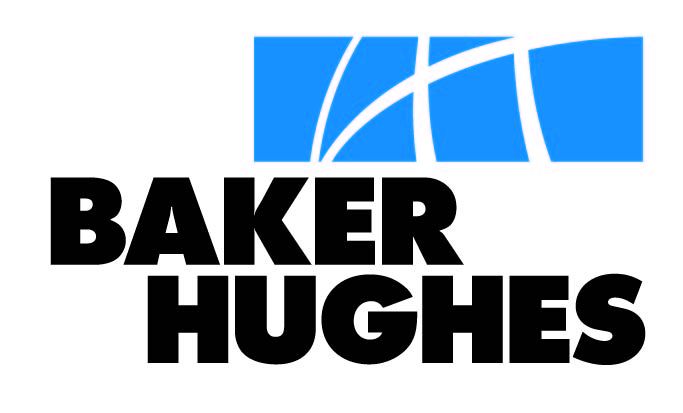DOJ Lawsuit Blocks the Merger of Halliburton and Baker Hughes
Chase Beakley
The Halliburton and Baker Hughes Merger: An Autopsy Report
On May 1, Halliburton and Baker Hughes announced that they were finally prepared to take their long suffering merger attempt behind the shed and put it out of its misery. The deal had once been valued at $35 billion but despite significant efforts from both parties it had been dead for some time already.
Antitrust concerns were present from the outset but on April 6 the Department of Justice filed a lawsuit that made their intentions to stop the deal clear. Leading the charge for the DOJ was Assistant Attorney General Bill Baer who took the stage at a press call and certainly did not hold anything back.
“I have seen a lot of problematic mergers in my time, but I have never seen one that poses so many antitrust problems in so many markets,” said Baer.
Halliburton maintained that its proposed divestiture package ($7.5 billion in assets) would be enough to create a legitimate third contender to challenge a post-merger Halliburton and fellow services giant Schlumberger. Even after the DOJ announced the suit, Halliburton and Baker Hughes responded in a press release, “We believe that the proposed divestiture package, which was significantly enhanced, is more than sufficient to address the DOJ’s specific competitive concerns.”
Baer and the DOJ disagreed. In his speech he cited a litany of reasons that the proposed merger could not be allowed to continue, repeatedly calling it “unfixable.” Chief among the objections, was the fact that Baker Hughes and Halliburton draw around 90 percent of their respective revenues from products and services in which they compete with one another. So, should the two be allowed to merge, competition in those product lines would be dramatically reduced, leaving only Schlumberger able to compete with the combined “HalliBaker” for the biggest contracts.
The two companies countered this point with somewhat contradictory logic. In their joint press release, they stated that the DOJ “has underestimated the highly competitive nature of the oilfield services industry,” implying that in such a plucky field, a dissemination of $7.5 billion worth of assets would be more than enough to create a competitor equivalent to the current Baker Hughes. However, in the same press, release they also posited that legal opposition to the deal is troubling, “especially in the context of the challenges the U.S. and global energy industry are currently experiencing,” essentially arguing that the deal should be given wiggle room because of the precarious state of the oil and gas market.
But if the market challenges were so extreme that the second and third-largest service companies should be given judicial grace, how much good would a flotsam of assets have done for their much smaller competitors? And for that matter, which of their competitors had the liquidity to acquire a significant share of those assets?
But let’s suppose that the proposed divestitures would have been enough to create a significant competitor (the DOJ insisted that this would have required a sale of $10 billion worth of assets, not $7.5 billion). Let’s also suppose that Halliburton’s smaller competitors could have come up with the money to purchase those assets. Even then, there would have been enough significant problems with the mechanism of the transaction to have stymied the deal.
The assets that Halliburton offered were pieced together from a smattering of product lines that would have made their transfer a logistical nightmare. Hundreds of employees would have had to be relocated, and equipment would have had to be moved to new facilities miles away. There is no telling how long it would have taken to resolve, and during all that time, the DOJ would have had to act as some kind of corporate custody arbiter.
“Halliburton’s proposed remedy is so complicated and convoluted that it would require unprecedented resources to oversee it,” said Baer. “Their ‘fix’ would turn the Antitrust Division into an energy sector regulator, rather than a law enforcement agency.”
He concluded the speech by repeating that he did not believe the merger can be fixed, saying, “The anticompetitive concerns are pervasive, the affected markets are numerous, and any remedy would be incomplete, complex, and risky. For these reasons, we are asking the court to issue a full-stop injunction to block this anticompetitive merger and preserve competition in the oilfield services industry.”
Acknowledging that hindsight is 20/20, one still has to wonder how the executives at Haliburton thought this process was going to play out. They gambled months of effort on this deal, but they were never capable of divesting enough to get it done. In a lower-for-longer climate, they just couldn’t afford to break off valuable product lines, ship them off to a competitor, and hope to maintain shareholder value, and a package of hodgepodge of nonessentials would have been a logistical impossibility to transfer quickly.
The gap between the amount of divestiture the DOJ would have accepted and what Haliburton could afford to lose was an albatross from day one, and management should have realized it and changed course. Those at the helm of Baker Hughes were more prescient, forcing Haliburton to pay a breakup fee of $3.5 billion if the deal failed. At least they’ll have that door prize to show for their efforts.
So how will the deal’s death affect the industry?
Removing the uncertainty surrounding the deal has buoyed both parties’ stock prices, but moving forward its hard to say just how much this wasted effort will weigh on them.
Baker Hughes’ revenue was down 48.8 percent year/year in Q4 last year and while that might be excusable in such desperate times, their return on equity is also much lower than their competitors showing that they’re struggling to make the necessary adaptations in this low price environment. They used the $3.5 billion to buy back $1 billion in shares and $1.5 billion in debt, but they’re going to need to shift gears quickly to close the gap between themselves and the other two major competitors.
Speaking of which, over the past few months Schlumberger has surely been delighted to watch their top two competitors waste time and energy on a strategy that was doomed to fail, instead of digging in and positioning themselves to compete.
It’s hard not to see Haliburton as the biggest loser here. They spent time, money and effort on project that only resulted in them paying one of their top competitors $3.5 billion, which is 10% of their market cap and not exactly pocket change. They’ve already trimmed 30 percent of their workforce since their peak in 2014 and as recently as March announced a plan to save jobs by pruning their retirement benefits and executive bonuses, which is a valiant effort to be sure, but it won’t be enough if things remain as they are.
In the long-term, the failure of this merger might be good news for the Basin. A Schlumberger/HalliBaker duopoly in the oilfield services industry would surely raise costs for producers and squeeze local service companies. In the short term, however, more trouble for two large Permian Basin employers is not a welcomed sight.











